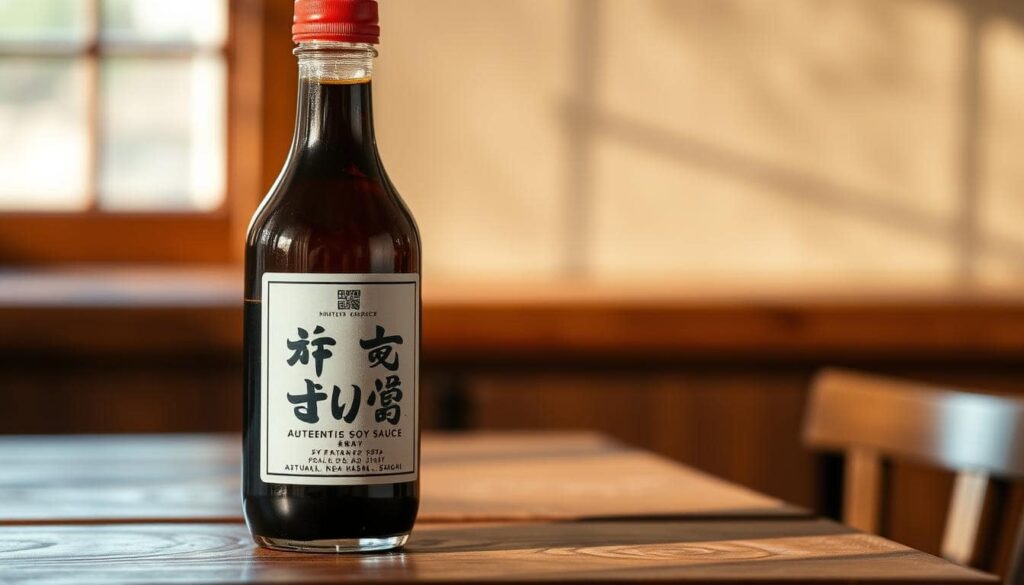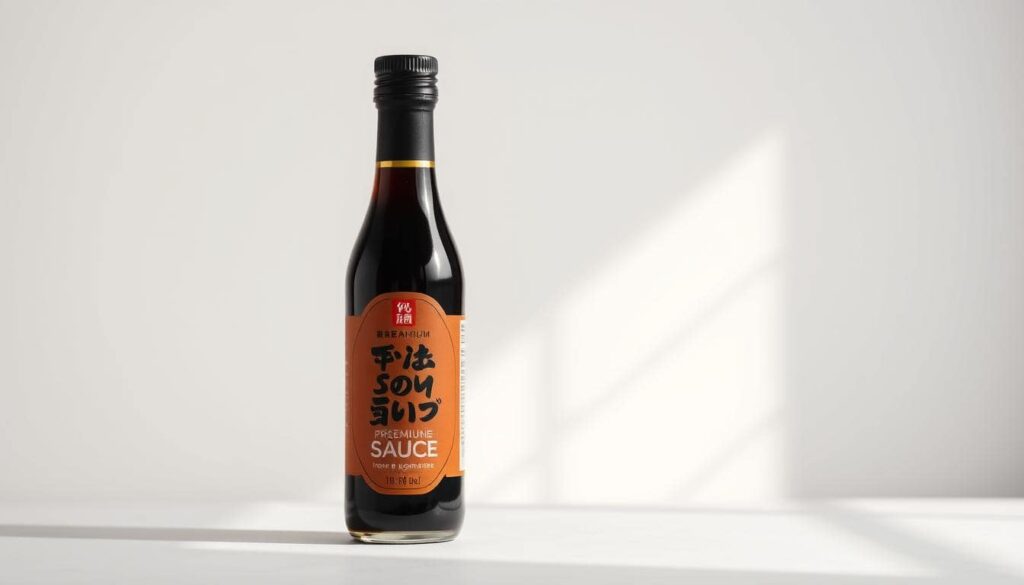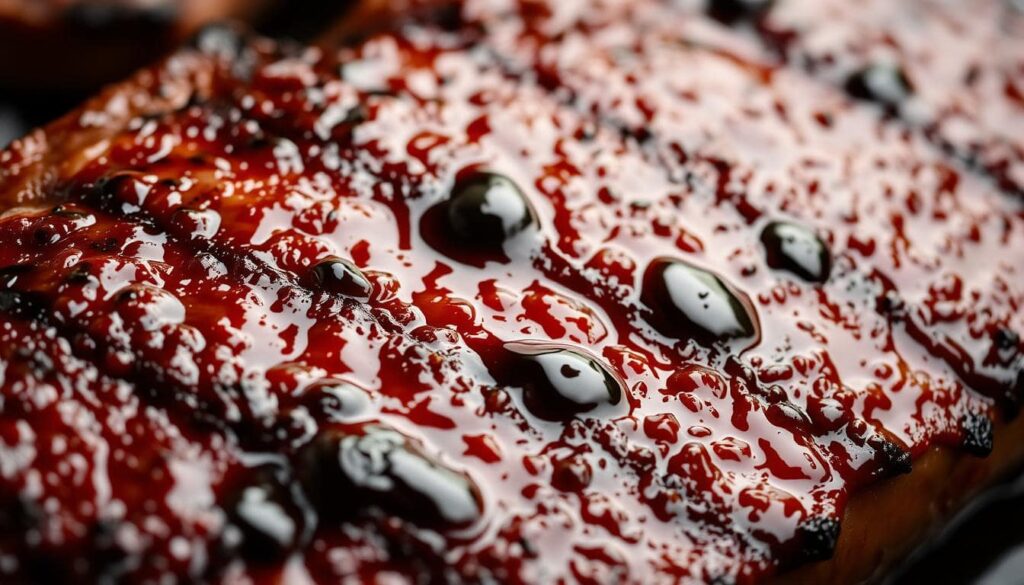Want to add depth and umami flavor to your dishes? Soy sauce is a versatile condiment that can elevate your cooking to new heights.
With a rich history dating back thousands of years, authentic soy sauce is made from fermented soybeans, salt, and water. This process gives it a complex flavor profile that enhances a variety of cuisines.
From stir-fries to marinades, the best soy sauce can transform your meals. Whether you’re a seasoned chef or a home cook, incorporating this staple into your recipes can make a significant difference.
Key Takeaways
- Understand the different types of soy sauce and their uses.
- Learn how to choose the best soy sauce for your recipes.
- Discover tips for incorporating soy sauce into your cooking.
- Explore the history and cultural significance of soy sauce.
- Enhance your dishes with the umami flavor of authentic soy sauce.
The Rich History and Culinary Importance of Soy Sauce
Soy sauce has traveled from ancient China to kitchens worldwide. It’s a key condiment in many cuisines. Its history spans centuries, showing its lasting appeal and versatility.
Origins and Traditional Production Methods
Soy sauce is made from soybeans, salt, and sometimes grains like wheat or rice. Traditional soy sauce production is hard work that takes patience. It can take months to years to ferment.
The making of soy sauce starts with soaking and cooking soybeans. Then, they’re mixed with a fermenting agent. After fermentation, the liquid is pressed and filtered to get the final soy sauce.
| Ingredient | Role in Soy Sauce Production |
| Soybeans | Primary protein source for fermentation |
| Salt | Controls fermentation and adds flavor |
| Wheat/Rice | Optional grains that can be used in fermentation |
Why Soy Sauce Has Become a Global Culinary Staple
Soy sauce is key in global cuisine for its flavor enhancement. It’s used in marinades, sauces, seasonings, and dips. Its versatility makes it a favorite in many dishes.
Soy sauce’s global popularity shows its wide appeal. It’s used in traditional Asian dishes and modern fusion cuisine. This makes soy sauce a global culinary staple.
Understanding Different Types of Soy Sauce
Choosing the right soy sauce is key to making your dishes better. Soy sauce comes in many forms, each with its own taste and use.
Light vs Dark Soy Sauce
Light and dark soy sauce are the main types. First is saltier and milder, great for seasoning and marinating. Second, with its deeper flavor, is best for braising and adding color.
Japanese, Chinese, and Other Regional Varieties
Soy sauce varies a lot by region, like between Japanese and Chinese types. Japanese soy sauce, or “shoyu,” is lighter and more subtle. Chinese soy sauce can be light or dark and has a bolder taste. Other places have their own soy sauce styles, showing local tastes and ingredients.
Specialty Options: Low-Sodium, Gluten-Free, and Organic
There are special soy sauces for different needs. Low-sodium soy sauce is good for those watching their salt. Gluten-free soy sauce is for those with gluten issues. Organic soy sauce is for those who want organic and sustainable products.
Knowing about these types helps you pick the best soy sauce for your cooking.
How to Choose the Right Soy Sauce for Your Cooking
The world of soy sauce is vast and varied. It offers a range of flavors and qualities for different cooking styles. When picking a soy sauce, it’s important to know what makes one different from another.
Quality Indicators to Look For
To find the best soy sauce, look for products made the old way and with top ingredients. The ingredient list should be simple, with few additives. The brewing method, whether fermented or chemical, greatly impacts flavor and quality.
Popular Brands Worth Trying
Some brands stand out in the soy sauce market. Kikkoman soy sauce is known for its quality and rich taste. Trying popular brands is a good way to find the right soy sauce for your cooking.
Soy Sauce Substitutes for Special Dietary Needs
For those with special dietary needs, there are soy sauce alternatives. A soy sauce substitute is great for those with gluten intolerance or on a low-sodium diet. Coconut aminos and tamari are popular choices that offer similar umami flavors.
By considering these factors and options, you can make a smart choice. This ensures you find a soy sauce that fits your cooking style and dietary needs.
Essential Cooking Techniques Using Soy Sauce
Soy sauce is key in many cooking methods, from marinating to glazing. Learning how to use it well can make your dishes taste better and be of higher quality.
Marinating: The Perfect Ratios and Timing
Marinating involves soaking food in a soy sauce mix to add flavor. The right soy sauce mix and enough time are essential. A good rule is 1 part soy sauce to 2 parts other liquids, adjusting to taste.
For chicken, mix 1/4 cup soy sauce with 1/2 cup olive oil, 2 cloves garlic, and black pepper. Marinate for at least 2 hours before cooking. Chef Gordon Ramsay says, “The marinade is where the magic happens.”
Creating Glazes and Reductions
Soy sauce is perfect for glazes and reductions, adding a rich flavor. Mix it with honey, brown sugar, or rice vinegar and simmer until thick. Brush it on meats or veggies for a tasty coating.
For a simple glaze, mix 1/2 cup soy sauce with 1/4 cup honey and 2 tablespoons rice vinegar. Boil, then simmer until thick. Use it on grilled foods in the last few minutes.
Seasoning and Umami Enhancement
Soy sauce is rich in umami, adding depth to dishes. It’s great for soups, stews, and stir-fries. Start with a little and adjust, as it’s salty.
Dipping Sauces and Condiments
Soy sauce is versatile for dipping sauces and condiments. Mix it with vinegar, chili oil, or ginger for different flavors. For example, a simple dumpling sauce is soy sauce, vinegar, and chili oil.
Try different mixes to create unique sauces. Masaharu Morimoto says, “The art of making great dipping sauce is in the balance of flavors.”
Delicious Recipes Featuring Soy Sauce
Soy sauce is a versatile ingredient that can elevate a variety of dishes. It can make classic chicken recipes and innovative stir-fry sauces even better. In this section, we’ll explore some mouth-watering recipes that showcase the power of soy sauce in your cooking.
Classic Soy Sauce Chicken
Soy sauce chicken is a timeless favorite. It’s simple to prepare and full of flavor. To make it, you’ll need:
Ingredients and Preparation
- 1 whole chicken
- 1/2 cup soy sauce
- 1/4 cup honey
- 2 cloves garlic, minced
- 1 tablespoon grated ginger
Mix the soy sauce, honey, garlic, and ginger to create a marinade. Coat the chicken evenly and refrigerate for at least 2 hours or overnight.
Cooking Process and Tips
Preheat your oven to 400°F (200°C). Remove the chicken from the marinade, letting any excess liquid drip off. Roast the chicken in the oven until it’s cooked through, basting occasionally with the pan juices. For a crispy skin, broil the chicken for the last 5-7 minutes.
Soy-Marinated Eggs
Try making soy-marinated eggs for a delicious and protein-rich snack. Boil some eggs, then marinate them in a mixture of soy sauce, sake, and sugar for a few hours or overnight. The result is eggs with a deep, savory flavor.
Sweet Soy Sauce Glaze for Grilled Dishes
A sweet soy sauce glaze can add a rich, caramelized flavor to grilled meats or vegetables. To make it, combine soy sauce, brown sugar, and rice vinegar in a saucepan. Bring to a boil, then reduce the heat and simmer until the glaze thickens. Brush it onto your grilled dishes during the last few minutes of cooking.
Simple Stir-Fry Sauce Combinations
For a quick and easy stir-fry sauce, mix soy sauce with other ingredients like oyster sauce, hoisin sauce, or rice vinegar. You can also add aromatics like garlic and ginger for extra depth. Experiment with different combinations to find your favorite flavor.
Storing and Using Soy Sauce Properly
To enjoy your soy sauce to the fullest, knowing how to store and use it is key. This versatile condiment can make many dishes better. But, its quality can drop if not stored right.
Shelf Life and Storage Requirements
Soy sauce stays fresh because of its salt. But, light, heat, or air can make it taste less good. Store it in a cool, dark place, sealed well. You might wonder, does soy sauce expire? It doesn’t really expire, but its quality can decrease.
Nutritional Information and Health Considerations
Soy sauce is high in sodium, with a tablespoon having 250-300 milligrams. It also has antioxidants and some B vitamins. If you’re watching your diet, there are low-sodium and gluten-free soy sauces available. It’s key to use soy sauce in moderation because of its sodium.
Tips for Maximizing Flavor and Freshness
To keep soy sauce flavorful and fresh, don’t let it mix with other foods or utensils. This can spread bacteria. Always use a clean tool to pour soy sauce. If you don’t use it often, move it to a smaller container to cut down on air exposure. Following these tips can help keep your soy sauce tasting great.
Conclusion: Making the Most of Soy Sauce in Your Kitchen
Now that you’ve learned about soy sauce’s rich history and uses, it’s time to use it in your cooking. Knowing the difference between light and dark soy sauce, and Japanese and Chinese types, can make your dishes more interesting. You can also try specialty soy sauces to add even more flavor.
Using soy sauce lets you try different cooking methods. You can marinate, glaze, season, or make dipping sauces. Whether it’s soy sauce chicken or stir-fry sauce, it’s a key ingredient that boosts umami flavor in your food.
As you keep exploring soy sauce, remember to store it right to keep its flavor and freshness. With what you’ve learned, you’re all set to improve your cooking by adding soy sauce to your recipes. You’ll find new ways to make your dishes even better.
FAQ
What is the difference between light and dark soy sauce?
Light soy sauce is lighter and has a milder taste. Dark soy sauce is thicker and has a richer flavor. Light soy sauce is great for seasoning and marinades. Dark soy sauce adds color and depth to dishes.
Is soy sauce gluten-free?
Traditional soy sauce isn’t gluten-free because it’s made with fermented wheat. But, some brands offer gluten-free soy sauce made with rice or other gluten-free ingredients.
How is soy sauce made?
Soy sauce is made by fermenting soybeans, salt, and sometimes wheat. A fungus, like Aspergillus oryzae, breaks down the soybeans. This creates the soy sauce’s unique flavor and aroma.
Does soy sauce expire or go bad?
Soy sauce lasts a long time because of its salt content. But, it can get worse over time if not stored right. Always check for mold or an off smell before using.
How should soy sauce be stored?
Keep soy sauce in a cool, dark place like a pantry. Once opened, store it in the fridge. This helps keep its flavor better.
Can I make my own soy sauce at home?
Yes, you can make soy sauce at home. You’ll need soybeans, salt, and water. But, it takes patience, as fermentation can take months to years.
What are some common uses for soy sauce in cooking?
Soy sauce is versatile. It’s used in marinades, stir-fries, braises, and as a seasoning. It’s also great for dipping sauces, glazes, and condiments.
Is soy sauce high in sodium?
Yes, soy sauce has a lot of sodium because of its salt content. But, there are low-sodium options for those watching their salt intake.
Can I use soy sauce as a substitute for other ingredients?
Soy sauce can sometimes take the place of salt or fish sauce in recipes. But, be careful because it has a very strong umami taste.
What is sweet soy sauce, and how is it used?
Sweet soy sauce, or kecap manis, is a sweeter version of regular soy sauce. It’s popular in Southeast Asian cooking. People use it to marinate, glaze, or as a sauce for grilled meats and vegetables.



